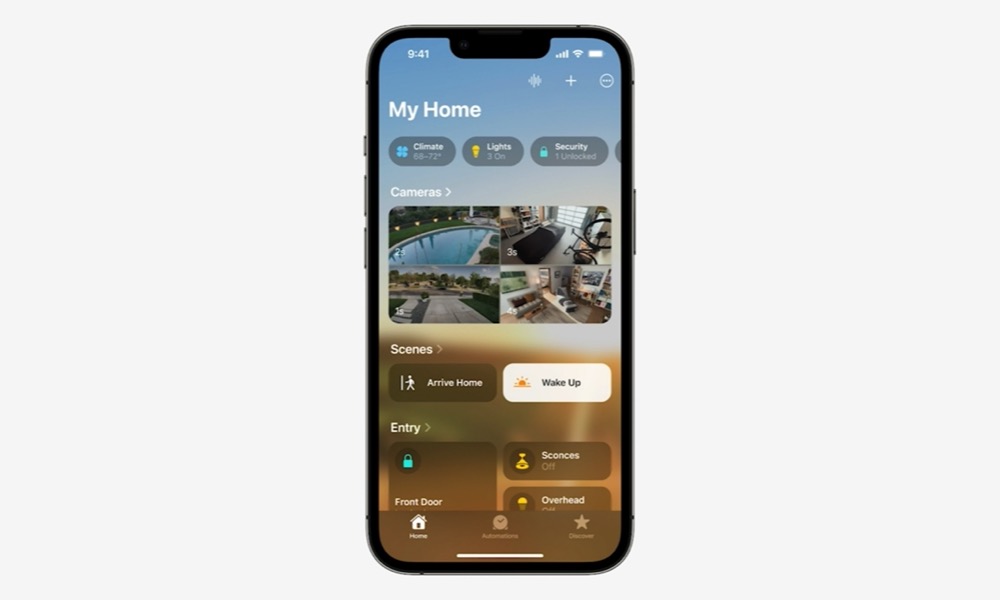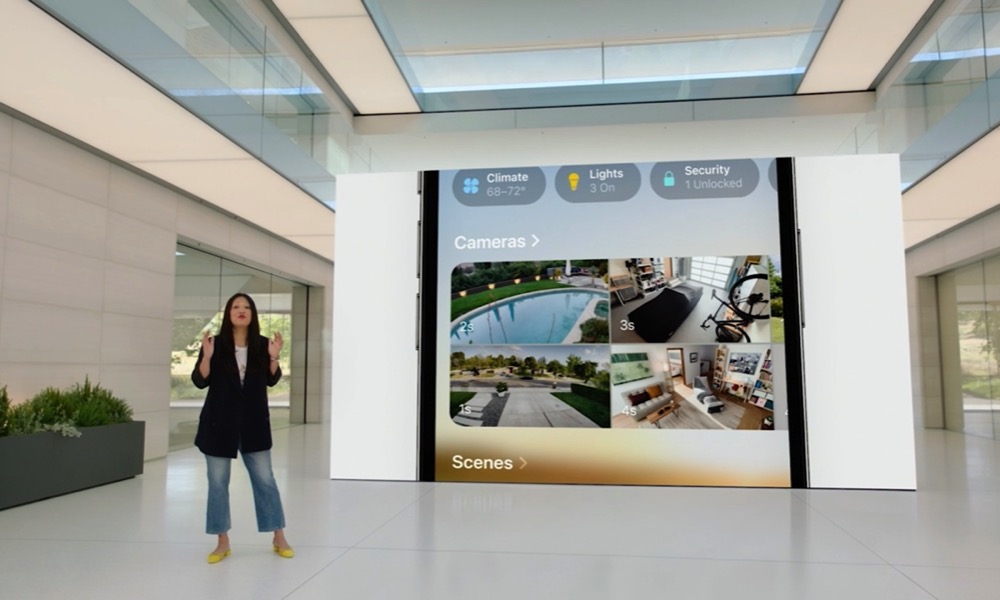With Matter Support, Apple Is Bringing These New Features to Your Home
 Credit: Apple
Credit: Apple
Toggle Dark Mode
During today’s announcement of iOS 16, Apple also took the opportunity to outline how it’s ushering in the next generation of home automation, thanks to its involvement in the new Matter standard.
It’s been nearly three years in the making, but the long-awaited era of interoperable home automation accessories will finally become a reality this year.
Apple joined Project Connected Home over IP in late 2019, combining with Amazon, Google, and Zigbee Alliance to come up with a single standard that would make all smart home accessories work together, regardless of platform.
This group re-branded as “Matter” in early 2021, but the objective remained the same: to fulfill the dream of cross-compatibility so consumers would no longer have to worry about whether their chosen accessories worked with Apple’s HomeKit, Amazon’s Alexa, or Google Home. Matter accessories would work with them all.
With the arrival of iOS 16 later this year, Apple is turning the key on Matter compatibility, and it turns out that the company has played a much more significant role in the project than we first thought.
Laying the Foundation
Matter isn’t just about making home accessories work together. There has to be a common underlying framework to unify them, and it appears that Apple’s HomeKit has served as the foundation of that.
During today’s Worldwide Developer Conference (WWDC) keynote, Apple Human Interface Producer Corey Wang provided an update on Matter’s progress, noting that Apple has contributed HomeKit so that Matter will be built on “the same core principles and maintain the highest level of security.”

It makes sense. Despite its lack of accessory support, HomeKit has always been leagues ahead of the competition when it comes to security, privacy, and even advanced automation. Apple has hampered this a bit by providing an overly simplistic Home app, but the underlying HomeKit frameworks have always been capable of much more sophisticated routines.
By contrast, Amazon and Google jumped out ahead thanks to their broader ecosystem and features like voice control, but Apple had things like rules, schedules, and routines years before either of those other players. HomeKit supported sophisticated automation from when it first debuted in 2014; Amazon and Google only began adding them in 2017.
Ironically, it was Apple’s focus on privacy and security that held HomeKit back. Initially, HomeKit accessories had to incorporate hardware encryption chips supplied by Apple. By contrast, all a manufacturer had to do to make an accessory work with Alexa was add a few lines of code. This resulted in a vastly wider array of accessory options for Alexa users, even if they weren’t as secure as those built for HomeKit.
Apple eventually relented and allowed for firmware-based HomeKit support without the need for encryption chips, at least for some accessories, but by then, it was too late. Amazon and Google were already dominating the accessory landscape.
Fortunately, with Matter, this will soon be a thing of the past. While this won’t make older accessories magically start working with HomeKit, manufacturers now have this to aim for in their future accessories, and they’ll obviously want to embrace as wide of an audience as possible.
Wang noted that there are already over 130 products in the pipeline ready to support the Matter standard. Apple is already preparing to embrace this much more comprehensive array of accessories with some significant changes to the Home app in iOS 16, iPadOS 16, and macOS Ventura.
A Larger Playing Field
When it comes to HomeKit, Matter support will significantly expand the types of accessories available in Apple’s Home app, and Apple wants to make sure it’s ready for it. Although HomeKit supports most mainstream accessories like lights, door locks, thermostats, and temperature accessories, Alexa and Google Home go well beyond that, into everything from refrigerators and stoves to coffee makers.
To ensure this, Apple has redesigned the app from the ground up in iOS 16, improving the underlying architecture, and rethinking the navigation.

Rooms and favorites will now appear in a single main tab, so you’ll be able to see your entire home in a single view. Since that can quickly get overwhelming, a series of buttons at the top will let you filter by category, such as lighting, security, climate devices, water sensors, and so forth. This doesn’t change the main view but instead narrows it down to show only those devices in that chosen category.
Apple has also redesigned the tiles so that different accessories will be more easily recognizable, using shapes and colors to identify different types of devices at a glance and displaying more relevant information on the tiles.
If you have HomeKit security cameras, the new Home app will provide a multi-camera view so you can get a glance of up to four cameras in one condensed tile, with the ability to see more by swiping to the right.
Notably, support for Matter will require a Home Hub, and interestingly it looks like the iPad will no longer be filling that role. Apple specifically states that “Only Apple TV and HomePod are supported as home hubs.”







